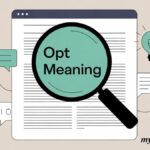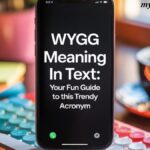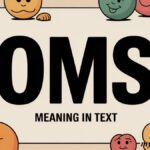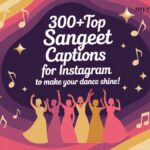Other ways to say “the text states” refer to alternative expressions that writers can use to introduce evidence, quotations, or author claims without sounding repetitive. This phrase is common in academic writing, scholarly communication, and formal writing, yet overuse often makes essays, reports, and analyses feel mechanical. By replacing it with precise synonyms, writers achieve stronger clarity, better phrase variation, and a more engaging tone.
Repetition dulls even the sharpest ideas. Readers notice when the same phrase echoes through a page, and their attention quickly drifts. A lively piece of writing keeps them hooked by weaving in variety. Using different ways to introduce textual evidence not only improves flow but also signals deeper comprehension. The right word choice can transform a bland sentence into one that feels polished and authoritative.
Exploring other ways to say “the text states” equips writers with a toolkit of versatile options—from assertive verbs like argues and contends to descriptive choices like reveals and conveys. These alternatives elevate textual analysis, essay improvement, and professional communication. Whether in a research paper, book review, or business report, mastering this skill ensures writing remains clear, dynamic, and reader-focused.
Why “The Text States” Undermines Your Professional Credibility
The Hidden Costs of Repetitive Language
Academic tone suffers when writers rely on tired phrases. “The text states” creates several problems that damage your scholarly communication:
Vague attribution represents the biggest weakness. This generic phrase fails to specify whether you’re referencing a peer-reviewed study, a blog post, or a centuries-old manuscript. Readers can’t gauge source material credibility when you treat all texts identically.
Passive construction creates unnecessary distance between readers and your evidence. Instead of dynamic quote integration, you’re building walls that make your analysis feel detached and academic in the worst possible way.
Missed nuance opportunities hurt your writing improvement efforts. Every source takes a different approach—some argue forcefully, others suggest tentatively, and many present objective findings. “The text states” ignores these crucial distinctions.
When This Phrase Actually Works
Don’t completely abandon this construction. Formal writing sometimes requires neutral language:
- Basic summaries for general audiences benefit from simple attribution
- Legal contexts demand a neutral tone in specific situations
- Student writing at introductory levels can use this phrase appropriately
- Reading comprehension exercises often prefer straightforward language
The key lies in contextual writing—matching your phrase variation strategy to audience expectations and document requirements.
22 Dynamic Alternatives That Elevate Your Writing Style
Authoritative Voice Alternatives
These options work when your source material takes definitive positions or presents strong evidence.
The Author Argues
Perfect for source attribution when writers take clear stances. This alternative signals intellectual engagement rather than passive reporting.
Example: “Johnson argues that remote work productivity exceeds office-based metrics by 23%, challenging traditional management assumptions about workplace effectiveness.”
The Research Demonstrates
Choose this when textual evidence comes from empirical studies. “Demonstrates” implies solid proof rather than mere opinion.
Example: “The longitudinal study demonstrates clear correlations between sleep patterns and academic performance, with participants showing 15% improvement in test scores after implementing consistent sleep schedules.”
The Analysis Reveals
Critical writing benefits from this option when sources uncover hidden insights or unexpected findings.
Example: “Budget analysis reveals $2.3 million in overlooked operational savings, primarily through automated procurement system optimization.”
The Data Indicates
Statistical or numerical evidence presentation calls for precise language. This phrase works perfectly with quantitative sources.
Example: “Sales data indicates Q3 performance exceeded projections by 18%, driven primarily by unexpected growth in the 25-34 demographic.”
The Findings Suggest
Use this for tentative conclusions or when interpretation requires careful qualification.
Example: “Preliminary findings suggest causation between variables remains unclear, requiring additional longitudinal research to establish definitive relationships.”
The Study Concludes
Final determinations from research warrant definitive language that signals completion and authority.
Example: “The meta-analysis concludes that mindfulness intervention methods show statistically significant improvement in anxiety reduction across all participant groups.”
Descriptive Precision Alternatives

These options provide specific information about how sources present their content.
The Document Outlines
Formal phrasing works well when sources provide structured information or step-by-step processes.
Example: “The policy document outlines three distinct implementation phases for regulatory compliance, each requiring specific departmental coordination protocols.”
The Report Details
Comprehensive information coverage calls for language that emphasizes thoroughness and depth.
Example: “The quarterly report details unprecedented growth across all market segments, with particular strength in emerging technology applications.”
The Passage Describes
Literary analysis and explanatory content benefit from this descriptive option.
Example: “The opening passage describes the protagonist’s motivations through a subtle internal monologue, revealing psychological complexity that drives subsequent plot development.”
The Section Explains
Complex concept clarification requires language that emphasizes educational value.
Example: “Section 4.2 explains algorithmic decision-making processes in automated trading systems, breaking down computational logic for non-technical stakeholders.”
The Text Specifies
Precise details or requirements demand exact language that eliminates ambiguity.
Example: “Contract language specifies delivery deadlines within 72-hour windows, with penalty clauses activating for any delays beyond established parameters.”
The Literature Emphasizes
Academic voice strengthens when highlighting important themes across multiple sources.
Example: “Current literature emphasizes stakeholder engagement as crucial for project success, with 89% of studies correlating participation levels with positive outcomes.“
Academic Sophistication Alternatives
These options elevate scholarly communication with a formal register appropriate for advanced academic contexts.
The Discourse Presents
Formal writing in academic disciplines benefits from this elevated option.
Example: “Feminist discourse presents compelling arguments against traditional gender role assumptions, challenging patriarchal structures through intersectional analysis frameworks.”
The Scholarship Maintains

Academic field consensus requires language that signals broad professional agreement.
Example: “Contemporary scholarship maintains that climate models require constant recalibration as new variables emerge from accelerating environmental changes.”
The Commentary Explores
Analytical examination calls for language that suggests depth and thorough investigation.
Example: “Literary commentary explores symbolism within post-colonial narrative frameworks, revealing how authors subvert imperial discourse through linguistic choices.”
The Critique Examines
Critical writing approaches benefit from language that signals analytical rigor.
Example: “Architectural critique examines sustainable design principles in urban planning contexts, evaluating environmental impact against aesthetic considerations.”
The Treatise Proposes
Formal theoretical arguments warrant dignified language that matches intellectual ambition.
Example: “Hawking’s treatise proposes revolutionary approaches to understanding spacetime curvature, fundamentally challenging existing cosmological models.”
The Exposition Clarifies
Educational academic writing requires language that emphasizes clarity and understanding.
Example: “The theoretical exposition clarifies quantum entanglement principles for undergraduate audiences, using accessible analogies without sacrificing scientific accuracy.”
Contextual Precision Alternatives
These options work when emphasizing specific portions or particular document types.
The Excerpt Highlights
Specific textual portions require language that draws attention to selected content.
Example: “The autobiography excerpt highlights childhood experiences that shaped leadership philosophy, particularly formative encounters with social inequality.”
The Citation References

Academic tone in formal papers benefits from precise attribution language.
Example: “The footnote citation references three supporting studies from peer-reviewed journals, establishing methodological precedent for experimental design choices.”
The Manuscript Notes
Historical or original documents warrant special language acknowledging their unique status.
Example: “The handwritten manuscript notes reveal significant editorial changes in final publication, showing author’s evolving perspective on central themes.”
The Transcription Records
Verbatim documentation requires language that emphasizes accuracy and faithfulness to original sources.
Example: “Interview transcription records exact participant responses during focus group sessions, preserving dialect and emotional inflections for qualitative analysis.”
Strategic Selection Guide: Matching Alternatives to Context
Academic Writing Contexts
Research papers demand evidence-focused language. Choose “demonstrates,” “indicates,” or “concludes” when presenting empirical findings. These options signal scientific rigor and methodological awareness.
Literature reviews require synthesis-oriented language. Employ “emphasizes,” “maintains,” or “explores” when connecting multiple sources. These alternatives show you understand scholarly conversations.
Critical analysis calls for interpretive language. Select “examines,” “reveals,” or “proposes” when diving deep into textual meaning. These choices demonstrate analytical sophistication.
Professional Communication Scenarios
Business reports need clarity-focused language. Choose “outlines,” “details,” or “specifies” when presenting information to colleagues. These options emphasize practical utility.
Legal documents require precision above all. Prefer “indicates,” “records,” or “notes” when accuracy matters most. These alternatives minimize interpretive ambiguity.
Technical writing demands educational language. Apply “explains,” “describes,” or “clarifies” when helping readers understand complex concepts. These choices prioritize comprehension.
Creative and Media Applications
Film reviews benefit from expressive language. Utilize “conveys,” “presents,” or “explores” when discussing artistic elements. These options acknowledge creative interpretation.
Literary criticism requires analytical sophistication. Implement “reveals,” “examines,” or “highlights” when discussing textual elements. These alternatives show deep reading comprehension.
Common Mistakes That Undermine Writing Clarity
Overusing Single Alternatives
Content variation suffers when writers replace one repetitive phrase with another. Substituting “the text states” with “the author argues” twenty times creates identical problems.
Professional language requires strategic rotation. Use 5-7 different alternatives throughout each document. This approach maintains reader engagement while demonstrating vocabulary range.
| Document Length | Recommended Alternatives | Rotation Strategy |
|---|---|---|
| 1,000-2,000 words | 3-5 alternatives | Change every 2-3 uses |
| 2,000-5,000 words | 5-7 alternatives | Change every 3-4 uses |
| 5,000+ words | 7-10 alternatives | Change every 4-5 uses |
Mismatching Tone and Context
Effective communication breaks down when formality levels clash with audience expectations. Using “discourse presents” in casual business emails confuses readers and damages credibility.
Language sophistication must match contextual requirements:
- Undergraduate papers: Use middle-range alternatives like “indicates,” “demonstrates,” “explains.”
- Graduate research: Employ sophisticated options like “posits,” “delineates,” “articulates”
- Professional reports: Choose clear alternatives like “outlines,” “details,” and “specifies.”
Ignoring Source Authority Levels

Source citation accuracy depends on matching language intensity to source material credibility. Treating blog posts and peer-reviewed studies identically undermines your analytical judgment.
Authority-based selection guide:
- Peer-reviewed studies: “demonstrates,” “concludes,” “establishes”
- Professional reports: “indicates,” “details,” “outlines”
- Opinion pieces: “suggests,” “argues,” “claims”
- Historical documents: “records,” “notes,” “documents”
Advanced Strategies for Quote Integration
Contextual Lead-ins
Paragraph transitions improve when you prepare readers for upcoming quotations. Strong alternatives create logical bridges between your analysis and supporting evidence.
Weak: “The text states that customer satisfaction increased.”
Strong: “The quarterly analysis reveals significant improvement in customer satisfaction metrics, with Johnson noting that ‘retention rates exceeded industry benchmarks by 23% across all service categories.'”
Analytical Follow-through
Textual analysis requires commentary that connects quotations to broader arguments. Your alternative phrases should launch a deeper examination rather than simply introducing evidence.
Example sequence:
- “The research demonstrates…” (introduces finding)
- “This data indicates…” (analyzes implication)
- “The findings suggest…” (connects to broader thesis)
Semantic Precision
Language variety serves analytical purposes beyond mere stylistic elegance. Different alternatives emphasize different aspects of the source material:
- “Argues” emphasizes author’s claims and persuasive intent
- “Reveals” highlights discovery and hidden information
- “Demonstrates” focuses on evidence and proof
- “Suggests” indicates tentative or implicit conclusions
Quick Reference Guide for Professional Writing Habits
Emergency Alternatives by Context
When you’re stuck mid-sentence and need immediate phrase variation:
For empirical sources: demonstrates, indicates, establishes, confirms. For theoretical sources: proposes, argues, maintains, contends
For descriptive sources: outlines, details, describes, and explains. Analytical sources: reveal, examine, explore, investigate
Formal Tone Intensity Scale
Match your alternative to the required formality levels:
| Casual | Professional | Academic | Scholarly |
|---|---|---|---|
| mentions | indicates | demonstrates | articulates |
| shows | details | establishes | delineates |
| talks about | outlines | examines | elucidates |
| points out | highlights | reveals | explicates |
Avoiding Redundancy Checklist
Before finalizing any document:
- [ ] Count uses of each alternative phrase
- [ ] Verify tone consistency throughout
- [ ] Check source authority matching
- [ ] Confirm natural flow when reading aloud
- [ ] Test reader engagement with varied sentence lengths
Case Study: Writing Improvement in Action
Before: Repetitive and Monotonous
“The text states that employee satisfaction has declined. The text states that productivity metrics show concerning trends. Text states that management intervention is necessary. The text states that current policies need revision.”
Problems identified:
- Four identical phrases in four sentences
- No content variation or analytical depth
- Passive voice throughout
- Missing source attribution specificity
After: Varied and Professional
“The quarterly report reveals declining employee satisfaction across all departments. Productivity metrics demonstrate concerning downward trends, with output falling 12% below quarterly targets. Management analysis indicates immediate intervention is necessary to address systemic issues. The policy review concludes that current procedures require comprehensive revision to meet evolving workplace demands.”
Improvements achieved:
- Four different writing alternatives
- Enhanced professional communication tone
- Active voice construction
- Specific evidence presentation
- Clearer source material attribution
Transform Your Academic Writing Today
Immediate Action Steps
Audit your current draft for repetitive patterns. Search for “the text states” and similar overused phrases. Count instances and mark them for revision.
Select contextually appropriate alternatives from this comprehensive list. Choose 5-7 options that match your document’s tone and audience expectations.
Implement strategic rotation throughout your writing. Avoid clustering identical phrases in consecutive paragraphs or sections.
Test natural flow by reading revised sections aloud. Effective communication sounds conversational even in formal contexts.
Long-term Professional Writing Habits
Build your alternative phrase vocabulary through consistent practice. Keep this reference guide accessible during writing sessions.
**Study exemplary academic writing in your field. Notice how respected authors handle quote integration and source attribution.
**Practice contextual writing across different genres. Business reports, academic papers, and creative writing each require different approaches to evidence presentation.
Conclusion
Finding other ways to say the text states helps writers sound smarter and more professional. It keeps essays, reports, and reviews from feeling flat or repetitive. Words like argues, suggests, reveals, or illustrates make writing flow better and match the tone of the subject. Using variety also shows that the writer understands the source deeply and can express it with precision.
Strong writing depends on clarity, variety, and reader engagement. Choosing other ways to say the text states is a simple step that makes a big difference. It adds life to your analysis, sharpens your arguments, and makes your work stand out. Whether you’re a student, researcher, or professional, mastering these alternatives will improve your communication and leave a lasting impression on your audience.
FAQs
1: Is “the text states” still common in academic writing?
Yes, it’s still widely used in essays and research papers, but professors now recommend variety for stronger expression.
2: What are the best other ways to say “the text states” in 2025?
Popular choices include the author asserts, the source argues, the report illustrates, and the excerpt reveals.
3: Do universities prefer using alternatives?
Most universities encourage students to use diverse phrasing, like the findings indicate or the document outlines, to show writing skills.
4: Can these alternatives be used in business or research reports?
Absolutely. Professional reports in 2025 often use terms like the analysis proposes or the document highlights.
5: Will using synonyms improve my writing score?
Yes. Varying phrases show language sophistication and often lead to higher grades or better evaluations.

Eddie Smith, the admin of Mystic Saviour, is a language enthusiast dedicated to exploring the art of words. Passionate about Word Mechanics, Name Narratives, and Linguistic Twists, he helps writers, marketers, and creatives unlock the full potential of language. Through Mystic Saviour, Eddie brings fresh, imaginative alternatives to everyday expressions, making communication more engaging and impactful.










